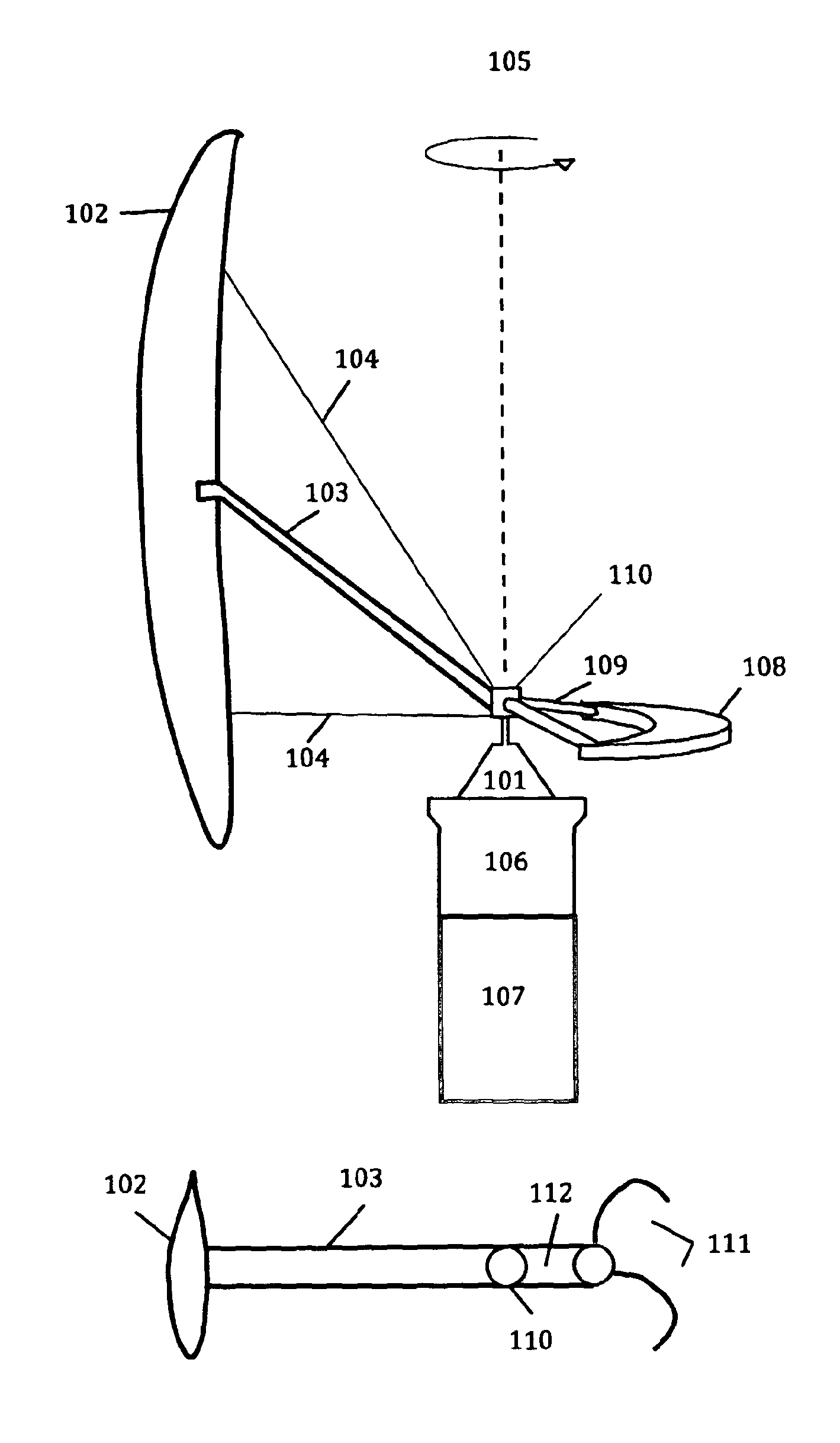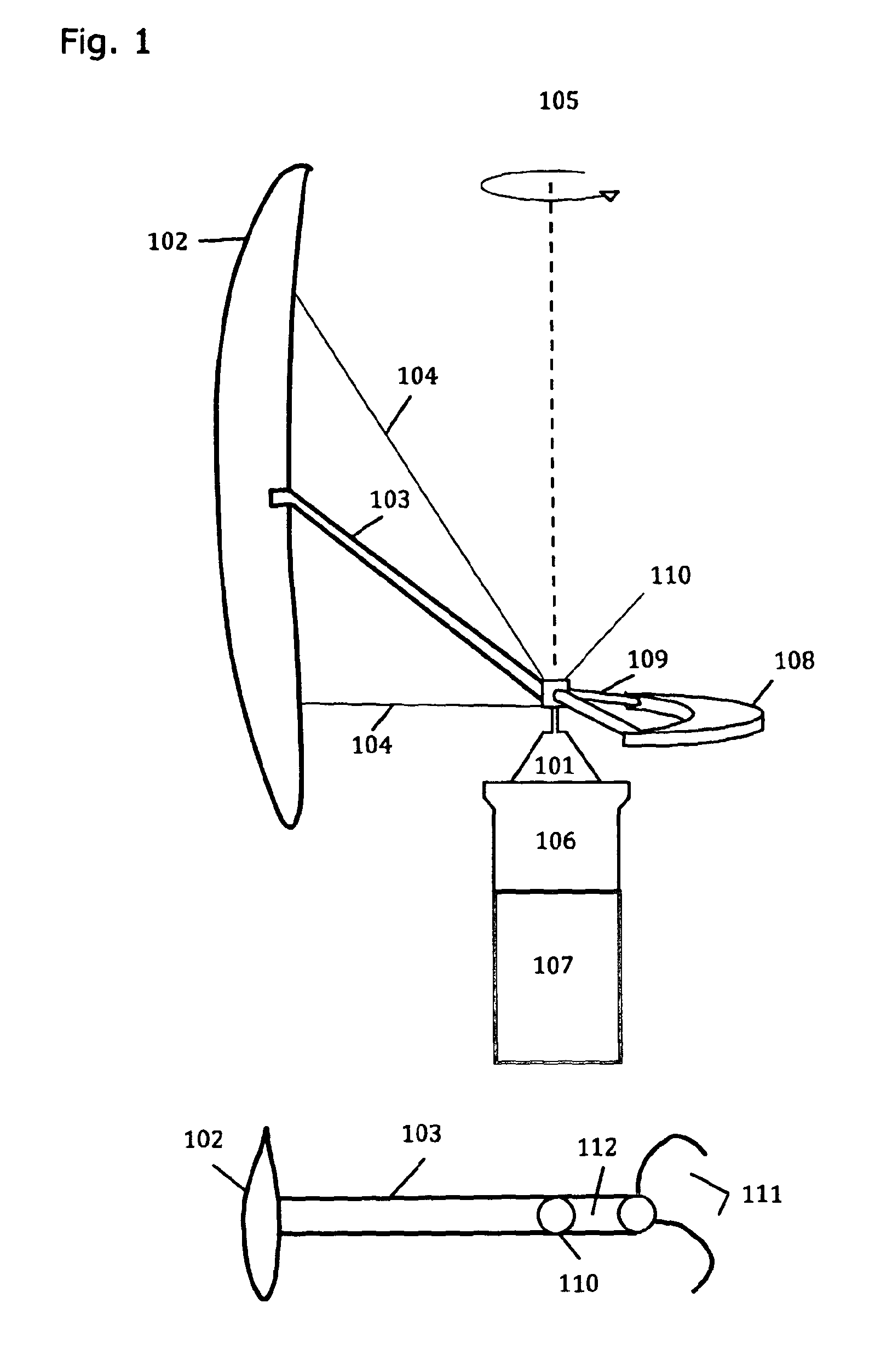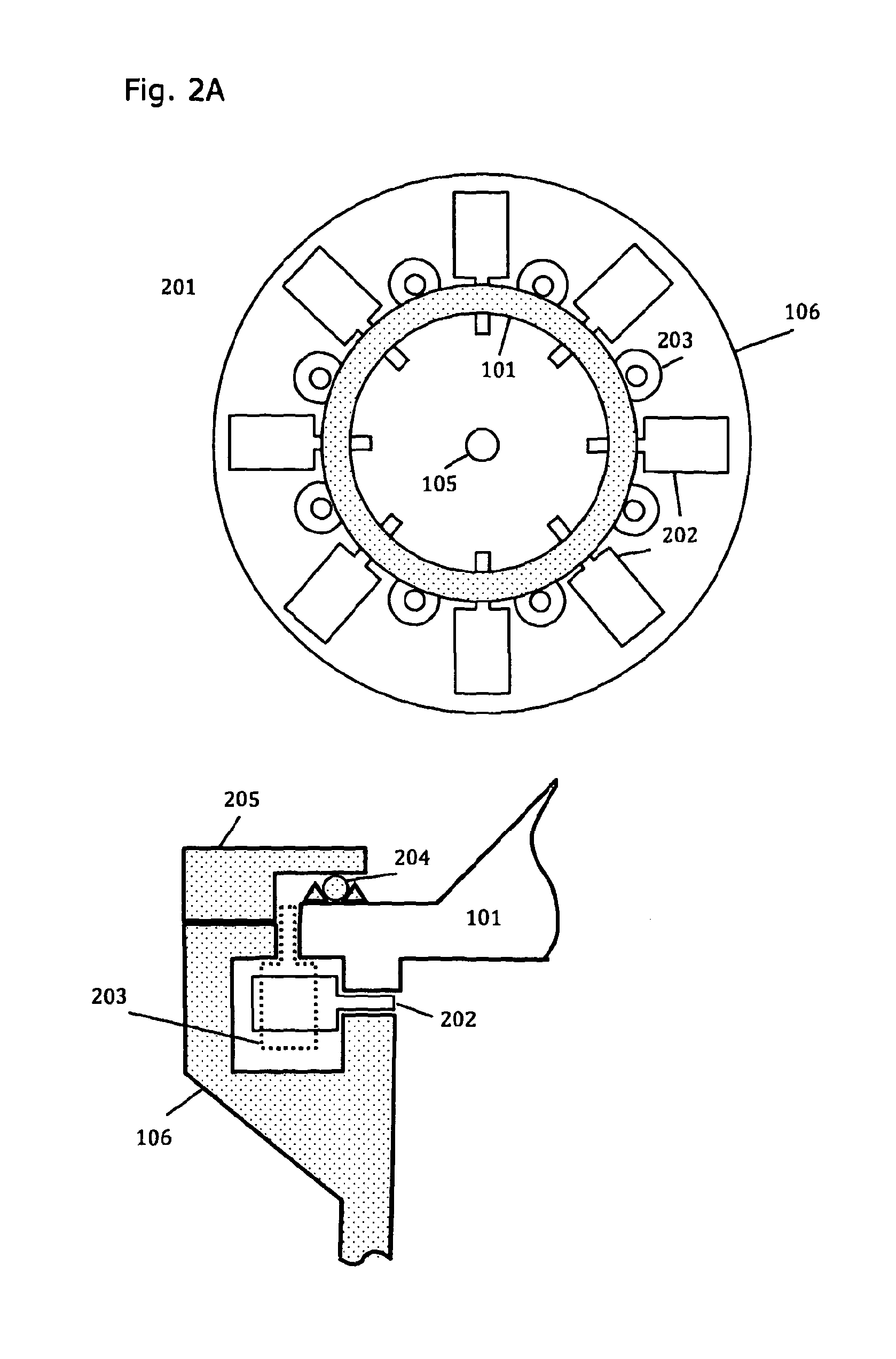Wind Turbine
a wind turbine and fluid power technology, applied in the direction of motors, electrical equipment, engine fuctions, etc., can solve the problems of high torque, drag on the turbine, and low performance of the vertical axis wind turbine, so as to maximize the energy generated by the wind, reduce the torque, and the effect of convenient availability
- Summary
- Abstract
- Description
- Claims
- Application Information
AI Technical Summary
Benefits of technology
Problems solved by technology
Method used
Image
Examples
Embodiment Construction
[0039]Reference will now be made in detail to some specific embodiments of the invention including the best modes contemplated by the inventor for carrying out the invention. Examples of these specific embodiments are illustrated in the accompanying drawings. While the invention is described in conjunction with these specific embodiments, it will be understood that it is not intended to limit the invention to the described embodiments. On the contrary, it is intended to cover alternatives, modifications, and equivalents as defined by the appended claims.
[0040]The following description makes full reference to the detailed features which may form parts of different embodiments as outlined in the objects of the invention. In the following example reference is made to a system comprising electric generators and gearpumps while it is to be understood that the invention covers other embodiments which use other types of hydraulic pumps such as piston pumps and vane pumps and the like. Othe...
PUM
 Login to View More
Login to View More Abstract
Description
Claims
Application Information
 Login to View More
Login to View More - R&D
- Intellectual Property
- Life Sciences
- Materials
- Tech Scout
- Unparalleled Data Quality
- Higher Quality Content
- 60% Fewer Hallucinations
Browse by: Latest US Patents, China's latest patents, Technical Efficacy Thesaurus, Application Domain, Technology Topic, Popular Technical Reports.
© 2025 PatSnap. All rights reserved.Legal|Privacy policy|Modern Slavery Act Transparency Statement|Sitemap|About US| Contact US: help@patsnap.com



